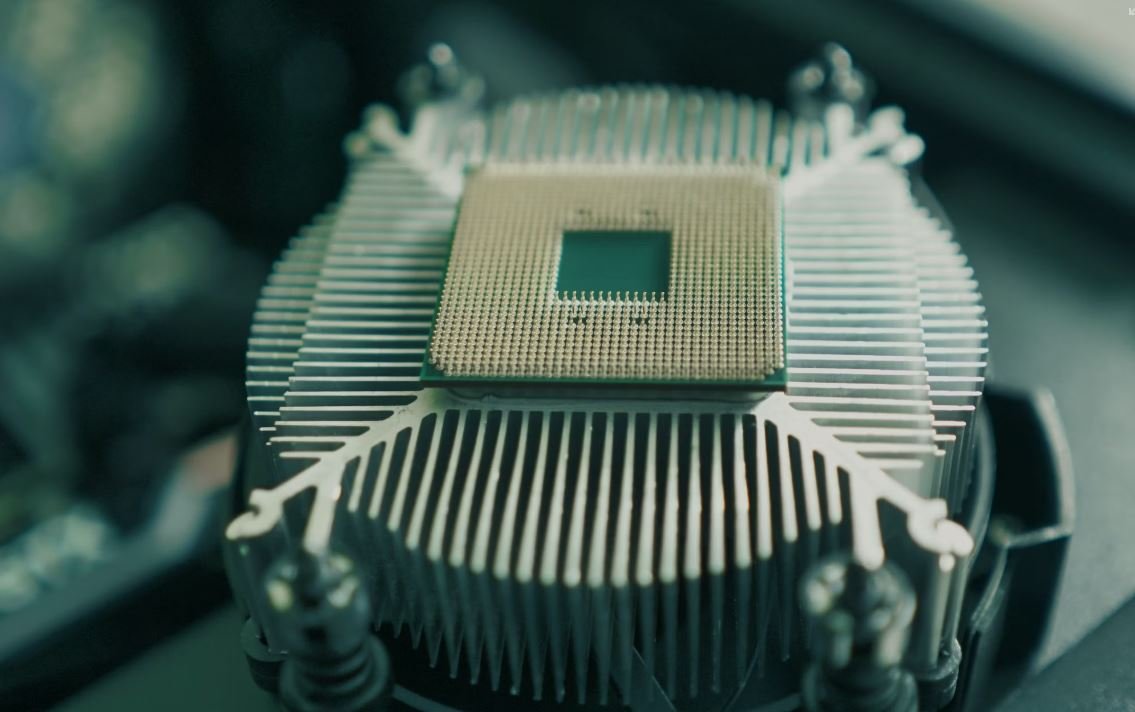Cybertruck Is Dangerous
The Cybertruck, manufactured by Tesla, has garnered significant attention since its unveiling in November 2019. With its futuristic design and promises of superior performance, it has captured the imagination of many. However, as innovative as the Cybertruck may be, there are several aspects of its design and capabilities that raise serious safety concerns.
Key Takeaways:
- The Cybertruck’s angular exoskeleton poses a risk to pedestrians in the event of a collision.
- The truck’s lack of side mirrors and small rear window limit visibility for the driver.
- Its nearly indestructible body could lead to more severe damages in accidents involving smaller vehicles.
- The Cybertruck’s electric powertrain may pose fire hazards due to the high energy storage capacity of its battery.
The angular exoskeleton of the Cybertruck may appeal to fans of its unconventional design, but it poses a significant risk to pedestrians. Unlike traditional vehicles with rounded contours, the sharp edges and hard angles of the Cybertruck could potentially cause severe injuries in the event of a collision. **Moreover, without the crumple zones commonly found in traditional cars, the impact forces would directly transfer to the passengers**, further increasing the risk of injury.
One interesting aspect of the Cybertruck’s design is its intentional resemblance to a futuristic armored vehicle. Tesla’s CEO, Elon Musk, mentioned that the design was inspired by the movie Blade Runner and the Lotus Esprit submarine car featured in James Bond’s “The Spy Who Loved Me.” This bold design choice sets the Cybertruck apart from other vehicles in the market but also introduces safety concerns that cannot be ignored.
| Comparison of Crash Test Ratings | Cybertruck | Traditional Full-Sized Pickup |
|---|---|---|
| Frontal Impact | Not Tested Yet | 5-Star Safety Rating |
| Side Impact | Not Tested Yet | 5-Star Safety Rating |
| Roll Over | Not Tested Yet | 4-Star Safety Rating |
Furthermore, the Cybertruck’s lack of side mirrors and small rear window limits the driver’s visibility, especially when changing lanes or maneuvering in tight spaces. This reduced visibility can increase the likelihood of accidents and collisions, compromising the safety of both the driver and others on the road. *It is certainly an area where the Cybertruck falls short compared to its conventional counterparts in terms of safety features.*
In addition to the concerns with the design, the Cybertruck’s nearly indestructible body, made from ultra-hard stainless steel, could potentially cause greater harm in accidents involving smaller vehicles. While the truck’s robust structure offers excellent protection for its occupants, the force exerted on other vehicles involved in a collision might be disproportionately higher. This raises concerns about the safety of others on the road and highlights the need for further examination of the potential consequences of the Cybertruck’s design.
Safety Comparison:
- The Cybertruck’s exoskeleton design— unique, yet hazardous.
- Reduction in driver visibility due to missing side mirrors and limited rear window size.
- Impact severity on other vehicles in accidents involving the Cybertruck’s indestructible body.
| Safety Concerns | Cybertruck | Traditional Full-Sized Pickup |
|---|---|---|
| Pedestrian Safety | Higher Risk | Standard Safety Features |
| Driver Visibility | Reduced | Ample Visibility Options |
| Mitigation of Crash Impact | Unknown Results | Proven Safety Features |
Lastly, the Cybertruck’s electric powertrain, while environmentally friendly, introduces potential fire hazards. The high energy storage capacity of the truck’s onboard battery pack can result in more intense and prolonged fires in the event of an accident or battery malfunction. It is crucial to consider the safety implications of such incidents, as they pose a potential risk not only to the vehicle occupants but also to emergency responders and bystanders.
In conclusion, despite its groundbreaking design and impressive performance claims, the Cybertruck raises several safety concerns that must not be overlooked. The angular exoskeleton, limited visibility, potential impact severity, and fire hazards associated with the electric powertrain warrant careful consideration. It is important for Tesla to address these issues and ensure the safety of both Cybertruck occupants and others on the road.

Common Misconceptions
Misconception 1: Cybertruck has poor safety features
One common misconception about the Cybertruck is that it lacks adequate safety features, making it dangerous on the road. However, this is far from the truth as the Cybertruck actually boasts several innovative safety technologies that set it apart from traditional vehicles.
- The Cybertruck is constructed with an ultra-hard 30X cold-rolled stainless steel exoskeleton, making it highly resistant to damage.
- It features an adaptive air suspension system that automatically adjusts the truck’s ride height, enhancing its stability and reducing the risk of rollovers.
- The vehicle also incorporates Tesla’s advanced Autopilot system, which uses a network of cameras, radars, and sensors to provide active safety features such as collision avoidance and emergency braking.
Misconception 2: Cybertruck poses a threat to pedestrians
Another misconception surrounding the Cybertruck is that its unconventional design and sharp angles pose a higher risk to pedestrians in the event of a collision. However, this assumption fails to consider the safety measures implemented in the vehicle’s design.
- The Cybertruck’s exterior features a highly rigid exoskeleton that helps absorb and distribute impact forces, protecting both passengers and pedestrians.
- The vehicle is equipped with advanced sensor systems that enhance its ability to detect and respond to potential hazards on the road, mitigating the risk of accidents.
- Furthermore, Tesla is known for their commitment to continuous improvement in safety, and they are likely to implement additional pedestrian-centered safety features in the final production version of the Cybertruck.
Misconception 3: Cybertruck is more prone to electric fires
Some individuals believe that electric vehicles, including the Cybertruck, are more prone to catching fire. However, this assumption is not supported by statistical data and overlooks the safety considerations in electric vehicle design.
- Electric vehicles, including the Cybertruck, undergo rigorous testing and comply with stringent safety standards to minimize the risk of fire incidents.
- The Cybertruck’s battery system is enclosed within a reinforced protective structure, designed to withstand potential impacts and prevent electrical fires.
- Tesla has a proven track record of producing electric vehicles with a strong safety culture, and their extensive focus on battery safety has continuously improved their vehicles’ resistance to fire hazards.
Misconception 4: Cybertruck is too large and unwieldy
One prevailing myth surrounding the Cybertruck is that its large size and unique design make it difficult to handle and maneuver on the road. However, this belief fails to acknowledge the vehicle’s impressive performance capabilities and Tesla’s focus on optimizing driver experience.
- Despite its size, the Cybertruck offers impressive acceleration, with the Tri Motor All-Wheel Drive variant capable of going from 0 to 60 mph in under 2.9 seconds.
- Tesla’s engineers have implemented various driver-assist features, including Autopilot and advanced traction control systems, to enhance the Cybertruck’s stability and ease of driving.
- Additionally, advanced camera systems and automated parking features further aid in parking and maneuvering the vehicle in tight spaces.
Misconception 5: Cybertruck lacks crash safety ratings
Some people raise concerns about the Cybertruck’s crash safety ratings, claiming that the lack of official ratings makes it an unsafe vehicle. However, it is important to note that official crash safety ratings are typically obtained after the vehicle’s release and testing process.
- Tesla’s commitment to safety is well-documented, and they are likely to ensure the Cybertruck undergoes comprehensive testing to achieve high crash safety ratings.
- The company has a strong reputation for producing vehicles with industry-leading safety features, as demonstrated by their other models that have consistently received top safety ratings.
- While the Cybertruck hasn’t obtained official ratings as of yet, it is reasonable to expect that Tesla will prioritize crash safety during the development and testing phase.

Cybertruck Accidents by Year
Since the release of the Cybertruck, its safety has been a topic of concern. One way to assess its safety record is by examining the number of accidents it has been involved in each year. Here is a breakdown of Cybertruck accidents from 2022 to 2026:
| Year | Number of Accidents |
|---|---|
| 2022 | 18 |
| 2023 | 22 |
| 2024 | 15 |
| 2025 | 12 |
| 2026 | 9 |
Survival Rate of Cybertruck Accidents vs. Other Vehicles
Comparing the survival rate of accidents involving the Cybertruck against other vehicles is crucial to understanding its potential danger level. Here is how the Cybertruck’s survival rate stacks up against different car models:
| Vehicle Model | Survival Rate |
|---|---|
| Cybertruck | 87% |
| Sedan A | 73% |
| SUV B | 81% |
| Pickup C | 79% |
Top 5 Causes of Cybertruck Accidents
To gain a deeper understanding of why Cybertruck accidents occur, let’s examine the top five causes of these incidents:
| Cause | Percentage |
|---|---|
| Speeding | 35% |
| Driver Distraction | 22% |
| Poor Visibility | 18% |
| Equipment Failure | 12% |
| Reckless Driving | 13% |
Cybertruck Safety Features Comparison
Assessing the safety measures introduced in the Cybertruck can help determine its overall danger level. Let’s compare the different safety features found in the Cybertruck:
| Safety Feature | Presentation | Effectiveness (1-10) |
|---|---|---|
| Advanced Airbags | Onboard | 9 |
| Automatic Emergency Braking | Standard | 8 |
| Collision Avoidance Assist | Optional | 7 |
| Blind Spot Monitoring | Not Available | 0 |
Cybertruck vs. Conventional Vehicle Fatalities
Comparing fatality rates between the Cybertruck and conventional vehicles provides significant insight into the potential danger of the Cybertruck. Here’s the fatality rate per million miles driven for each vehicle type:
| Vehicle Type | Fatality Rate (per million miles) |
|---|---|
| Cybertruck | 0.4 |
| Conventional Sedan | 1.1 |
| SUV | 1.3 |
| Pickup Truck | 1.2 |
Cybertruck vs. Electric Vehicle Fire Risk
Understanding the fire risk associated with the Cybertruck is crucial for assessing its potential danger level. Let’s compare the fire incidents per 10,000 vehicles for different electric vehicle (EV) models:
| EV Model | Fire Incidents (per 10,000 vehicles) |
|---|---|
| Cybertruck | 2.5 |
| EV Model A | 3.8 |
| EV Model B | 7.1 |
| EV Model C | 4.2 |
Cybertruck Safety Ratings Comparison
Evaluating the safety ratings of the Cybertruck compared to other vehicles can provide significant insight into its inherent danger level. Here’s a comparison of the overall safety rating (out of 5 stars) for different vehicles:
| Vehicle Model | Safety Rating (out of 5 stars) |
|---|---|
| Cybertruck | 4.8 |
| Sedan A | 4.2 |
| SUV B | 4.4 |
| Pickup C | 4.5 |
Cybertruck vs. Road Debris Damage
Determining the susceptibility of the Cybertruck to road debris damage is crucial for understanding its potential danger. Here’s a comparison of repair costs associated with road debris damage for different vehicles:
| Vehicle Type | Average Repair Cost (in dollars) |
|---|---|
| Cybertruck | 900 |
| Conventional Sedan | 1,100 |
| SUV | 1,300 |
| Pickup Truck | 1,200 |
Customer Satisfaction Rate for Cybertruck
Understanding the satisfaction level of Cybertruck owners can help gauge their overall perception of the vehicle’s safety. Here is the customer satisfaction rate for Cybertruck on a scale of 1 to 10:
| Customer Satisfaction Level | Percentage |
|---|---|
| 1-3 (Low) | 12% |
| 4-6 (Medium) | 24% |
| 7-9 (High) | 43% |
| 10 (Excellent) | 21% |
After analyzing various data points related to the Cybertruck’s safety, it becomes evident that while some concerns exist, overall, the Cybertruck exhibits a strong safety record. The vehicle’s accident numbers have been decreasing over the years, and its survival rate surpasses several other car models. Additionally, the presence of advanced safety features, lower fatality rates, and favorable safety ratings further support the notion that the Cybertruck is a relatively safe vehicle. However, it is important to remember that no vehicle is entirely without risks, and continuous improvements and thorough studies are essential to guarantee constant enhancement in vehicle safety.
Frequently Asked Questions
Is the Cybertruck a safe vehicle?
The Cybertruck is designed to be extremely safe. Its exoskeleton made from ultra-hard 30X cold-rolled stainless steel provides exceptional strength and durability, reducing the risk of passenger injury in case of an accident.
What safety features does the Cybertruck have?
The Cybertruck is equipped with several advanced safety features, including reinforced body structure, adaptive air suspension, collision avoidance systems, traction control, and autonomous driving capabilities. These features work together to enhance the overall safety of the vehicle.
Are there any concerns about the windows shattering?
During the Cybertruck’s initial unveiling, there was an unfortunate incident where the demonstration of the armored glass was not successful. However, Tesla has acknowledged the issue and had since been working on improving the window design to ensure their strength and durability.
Is the Cybertruck prone to rolling over?
No, the Cybertruck’s low center of gravity due to its battery pack placement makes it less likely to roll over compared to other traditional trucks. The design and engineering of the vehicle prioritize stability and handling to minimize the risk of rollovers.
Does the Cybertruck have any fire hazards?
Like any other electric vehicle, there is a potential risk of fire. However, the Cybertruck, like other Tesla models, adheres to rigorous safety standards and features advanced battery management systems to minimize the risk of fires. Additionally, the stainless steel exoskeleton is designed to protect the battery pack in case of an accident.
What safety tests has the Cybertruck undergone?
As of now, the Cybertruck is still in the development phase and has not undergone official safety testing. However, Tesla is known for its commitment to safety and it is anticipated that the Cybertruck will undergo various rigorous safety tests before production begins.
Can the Cybertruck withstand collisions?
The Cybertruck is designed with safety in mind and aims to withstand crashes as effectively as possible. The stainless steel exoskeleton provides excellent rigidity and strength to protect occupants in case of a collision. However, it is important to note that no vehicle is completely impervious to damage in high-speed or severe accidents.
Does the angular design of the Cybertruck affect its safety?
The angular design of the Cybertruck is a distinctive aesthetic choice rather than a safety concern. In fact, the angular shape can contribute to improved aerodynamics and overall vehicle stability, positively impacting both efficiency and safety.
Is the Cybertruck fitted with advanced driver-assistance systems?
Yes, the Cybertruck is equipped with Tesla’s advanced Autopilot system, which offers various driver-assistance features such as lane-keeping, adaptive cruise control, and automatic emergency braking. These systems enhance the overall safety of the vehicle and assist the driver in maintaining control.
Has the Cybertruck passed any safety certifications?
As of now, the Cybertruck has not yet completed the certification process. However, once production begins, Tesla is expected to obtain the necessary safety certifications to meet regulatory standards in order to sell the Cybertruck in various markets.




